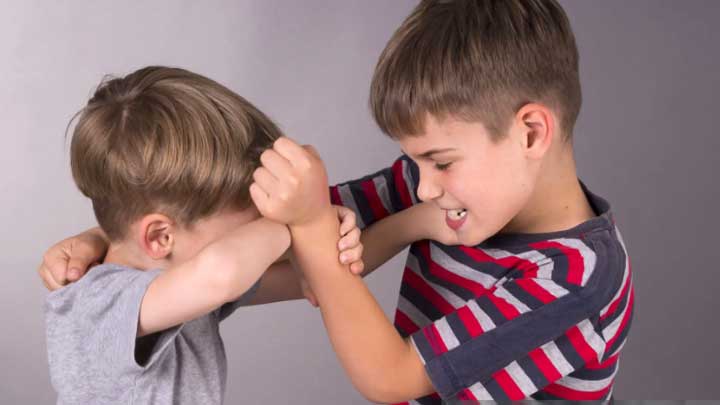Home > Online Counselling > Kid’s Problems > Child Always Getting Into Fights

You’ve had the talk—many times. Maybe with teachers, a counselor, your child, and sometimes even with yourself. You’ve explained right and wrong. You’ve shown empathy. You’ve disciplined calmly. Still… the school calls again. Another fight. Another incident. Another time your child couldn’t hold it together.
What hurts the most isn’t just the behavior. It’s that deep down, you know your child is a good kid. Thoughtful. Maybe even emotional. They might apologize later. They might cry about getting into trouble. But when the moment comes—when someone provokes, teases, or crosses them—they snap. It’s like reason disappears, and the reaction takes over.
You’re not alone. And your child isn’t “bad.”
In fact, many children who struggle with aggression are also some of the most sensitive, justice-oriented, or emotionally intense kids. Their emotional volume is just… louder. Their reactivity is just… faster. They feel big, and they respond big. And sometimes, even adults around them don’t know what to do with that intensity—so the child gets labeled, isolated, or misunderstood.
This article is for parents like you—the ones who know there’s more to the story than just “bad behavior.” We’ll unpack why some children default to fighting, what might be happening neurologically or emotionally beneath the surface, and why traditional “calm-down” strategies often don’t work for them.
You don’t need to parent harder. You need to parent smarter—with insight, not just intervention. And this article is a step toward that clarity.
You might be surprised to learn that aggression in children—especially boys between ages 5 to 11—is more common than we think. In early elementary years, impulsive behaviors, physical disputes, and emotional outbursts are part of many children’s development. But when these outbursts turn into a pattern, parents and schools start to worry.
According to CDC data and school behavior reports, approximately 10–15% of school-age children show moderate to severe behavior issues related to anger or aggression. That doesn’t mean all of them are violent or out of control—it means they struggle with emotional regulation when under stress, provoked, or overstimulated.
These issues show up as:
And here’s something critical to understand: many of these children are not aggressive by nature. They may be anxious, insecure, highly sensitive, or feeling powerless—and their body’s go-to reaction becomes fight mode.
So while the behavior might seem “aggressive,” the root might be overwhelm, fear, injustice, or even social confusion.
Understanding the “why” behind the fighting is more important than just managing the “what.” Children who default to fighting often have internal systems that are wired for quick activation—especially in environments that feel unsafe, chaotic, or emotionally uncertain.
Here are some of the most common causes of recurring aggression, even in kids who otherwise seem “good at heart”:
It’s often not just one cause—but a mix. And many children feel ashamed or confused about their own behavior, even if they don’t say it aloud. They don’t want to fight. They just don’t yet know what to do instead.
When a child gets into fights regularly—whether physical or verbal—it leaves emotional residue. On them. On their reputation. And on their self-concept.
Here’s what can build up over time:
But here’s the truth: kids who fight aren’t doomed. With the right insight, strategies, and emotional rewiring, they can transform into incredible leaders, advocates, and emotionally intelligent adults. The next part will show you how.
Fighting is not just a behavior problem—it’s an emotional signal. Your child is trying to cope, communicate, or protect something inside. So instead of reacting with more control, try offering more understanding with structure.
Here’s what helps children who can’t seem to stop fighting, even when they want to:
If these don’t feel like enough, it’s okay. Some children need more tailored insight—and that’s where LiveMIS can change the game.
Many of the world’s strongest leaders once struggled with anger. Think of Serena Williams or Malcolm X—known for intensity, drive, and fire—but only after learning how to focus their energy.
What looks like defiance today might be passion with no outlet. Anger often protects a sensitive heart. When a child learns how to channel it, that same force becomes courage, justice, and empathy.
Your job isn’t to “calm” your child. It’s to teach them that strength doesn’t mean hurting—it means handling.
You’ve tried calm talks. You’ve tried school support. Maybe even behavior charts. But if the fighting continues, it’s time to stop guessing—and start decoding.
LiveMIS helps you uncover what your child’s aggression is really protecting or expressing:
LiveMIS offers more than insight—it offers understanding. So your child finally feels seen, not judged. And you finally feel empowered, not helpless.
Your child may be struggling with anger, but that’s not all they are. Beneath that outburst is often a sensitive soul, craving control, connection, or safety.
They’re not failing. And neither are you.
With a deeper understanding of their emotional blueprint—and a shift from punishment to personalized guidance—you can help them step out of the “fighter” role and into something far more powerful: a self-aware, emotionally strong young person.
Let LiveMIS help you decode the deeper cause and give your child the support they deserve.
